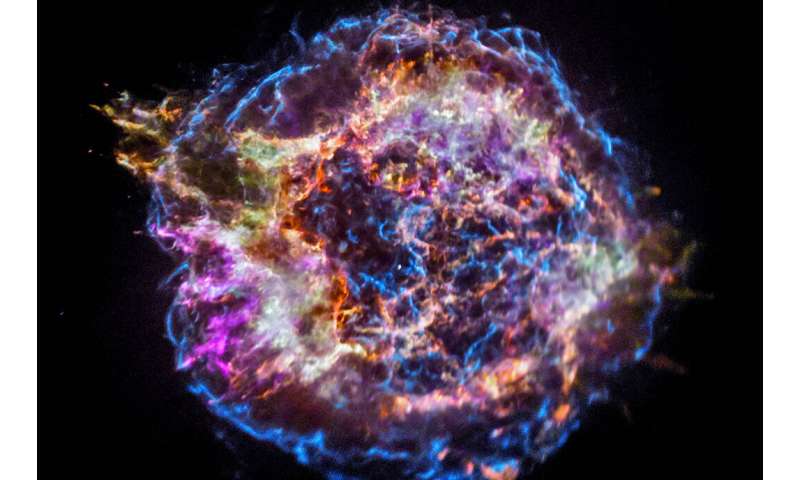Best of Last Week – Portending a supernova, enabling imagination in AI, fermented foods lower inflammation

It was a good week for space science as a small team with members from the NASA Goddard Space Flight Center, the University of Iowa and the Technical University of Denmark identified the source of Jupiter's gigantic magnetic field. Also, an international team of astronomers discovered a teardrop-shaped star that portends a massive supernova—the two stars forming the teardrop were found to be spiraling toward one another. And the team making up the LHAASO Collaboration detected an ultra-high-energy gamma-ray source found to be emanating from the galactic plane and the source was described as extended with emissions reaching 200 TeV.
In technology news, a combined team from Herriot-Watt University and Nokia Bell Labs realized a printed millimeter-wave modulator and antenna array for backscatter communications, technology that could support the growing demand for more Internet of Things devices. Also, a team at Canadian University Dubai in the UAE developed a new feature selection technique for intrusion detection systems to counter attacks against networks. And a team at USC outlined a means for enabling the "imagination" of artificial intelligence—new techniques that allow AI systems to create new imagery based on images they have seen before. Also, a combined team from the University of Toledo and the University of Alabama demonstrated low-temperature and effective ex situ group V doping of polycrystalline solar cells.
In other news, a team at Sinai Health found a common denominator linking all cancers by discovering they could divide all cancers into two groups based on the presence or absence of a certain protein. Also, a team with members from Stanford University, Purdue University, Hewlett-Packard, Penn State University and the Department of Energy's SLAC National Accelerator Laboratory, took the first snapshots of ultrafast switching in a quantum electronic device. They captured the action of atoms moving inside of a switch.
And finally, if you suffer from some kind of inflammation, you may want to note the results of a clinical trial conducted by a team at Stanford School of Medicine, which found that a fermented-food diet increases microbiome diversity and lowers inflammation.
© 2021 Science X Network